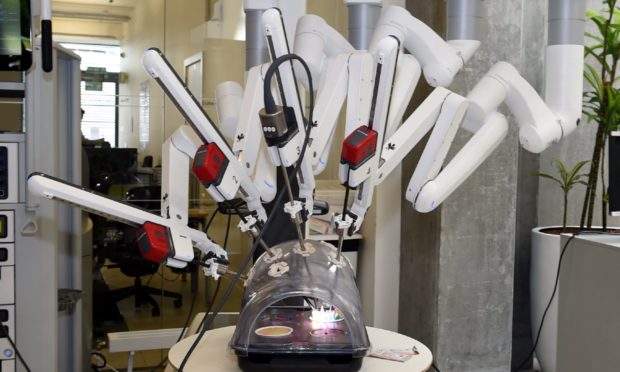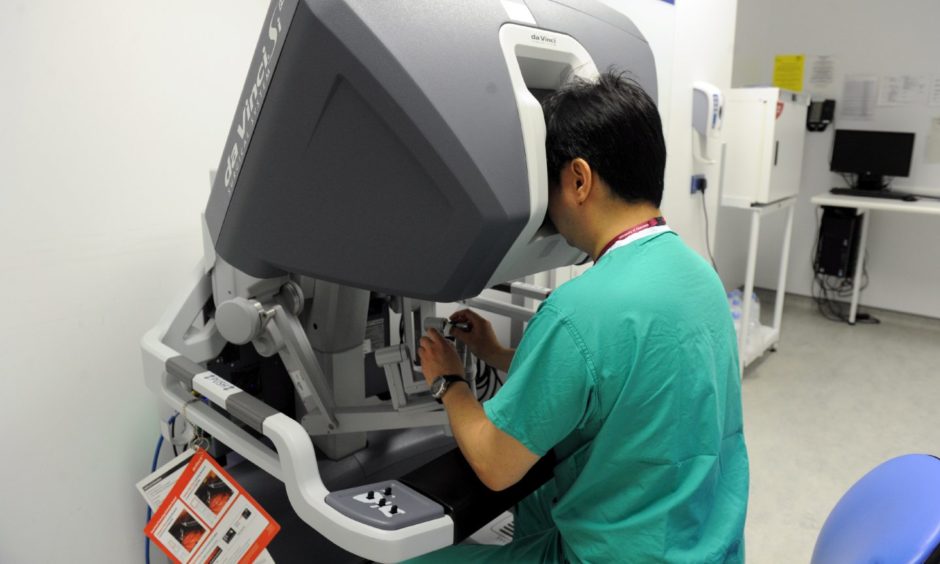Hopes Aberdeen can lead the field in robotic-assisted surgery have been backed by a £5.7 million investment in three new devices.
NHS Grampian, which is currently using the high-tech kit in keyhole surgeries treating prostate cancer, has signed off on plans to expand its pioneering programme,
The multi-million-pound spend is hoped to earn the health board, working with Aberdeen University researchers, a reputation as a centre of excellence in robotic-assisted surgery (RAS).
The equipment boasts fine instruments, which mimic a surgeon’s hand movements, and make small incisions into a patient’s body allowing intricate procedures such as tumour and organ-removal to be carried out with more precision – through a 3D high-definition camera.
This helps patients maintain better movement and function, means more vulnerable people can go under the knife when they might otherwise be deemed too high risk, and helps them to recover more quickly afterwards.
Research based on its impact has led to the Scottish Government pushing for RAS services to be introduced across the country – while NHS England expanded its programme after taking account of the evidence from Aberdeen.
A replacement for the machinery unveiled at Aberdeen Royal Infirmary’s urology department in 2015 will be one of three new machines.
Another is planned for use in knee and hip replacement operations while the third would be used in general surgery.
Controlled by the surgeon using a computer console, the kit, as a briefing prepared for NHS Grampian board members read, “is never ever making decisions”.
Acute medical director Paul Bachoo said: “To clarify what it is: this is technology which, when combined with skills of the multi-profession clinical, research, educational and supportive teams we have developed over the last five years, produces what we describe as RAS.
“It’s not technology on its own; it’s the people, workforce, diverse clinical skill.
“And it’s this human contribution which translates the precision of the technology into positive patient outcomes, reducing harm, and maintaining function of where you are operating.”
Leading the project, Mr Bachoo claimed NHS Grampian – which was the first Scottish health board to launch RAS services in 2015 – would be in danger of falling behind if the investment was refused.
This, he added, would be a loss of a major recruitment draw – as the authority continues to spend millions a year covering staffing gaps.
“As we debate bringing this additional capacity into our service, so too is the Scottish Government debating and embarking on a rollout of six robotic devices across Scotland.
“They are doing that for the same reason we are; the benefit to patient care – because we in Grampian have actively contributed to the research and evidence base.
“We can be in a position where we have something quite unique, mature and developed to retain and develop staff and attract people to this area where we have always struggled.”
Medical director Nick Fluck added: “I remember the opening of the urology robot in the Ucan centre, it’s important to remember that was driven by principally clinical teams wanting to take patient care further.
“But it was absolutely delivered in collaboration with our public, being 50% supported by fundraising.
“This is something where we are a leading board and we are making a leading difference to the public and patients.”
Charity Ucan has already begun fundraising for a second device for the urology department at ARI.











